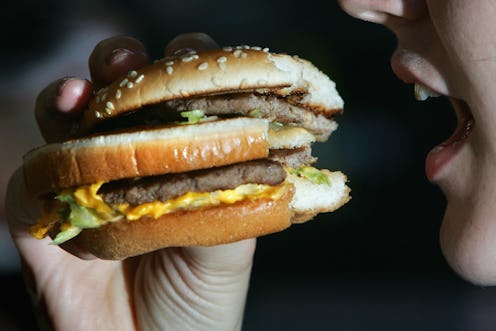News
Making A Return: Pink Slime
Remember when you found out that your burgers were filled with pink slime? I mean, with a name like pink slime, how could anyone forget? Well, now it's back. Pink slime company Beef Products Inc. is reopening a plant in Kansas after demand grows in response to soaring beef prices. In April, those prices hit a record high due to severe drought conditions in California, which depleted the U.S. cattle herd. As a result, food companies are turning to less-expensive fillers to make up for the high costs.
In March 2012, ABC News blew the lid off of pink slime with the help of former United States Department of Agriculture scientists Gerald Zirnstein, who originally coined the term "pink slime," and Carl Custer, both of whom warned against consuming the "salvage product" made of waste trimmings. The report revealed that 70 percent of the ground beef sold at supermarkets contained this substance.
Beef Products Inc. reported that sales fell by 80 percent after the ABC report, and major buyers like McDonald's and supermarket chain Safeway told ABC they would stop mixing their beef with pink slime. Soon after, three of its four plants closed down, leaving just one running facility in Dakota City, Nebraska. But the drop-off was apparently temporary.
Fast-forward two years, and now the pink slime appears to be climbing back to life.
"Although business conditions are not yet at the point where we can resume lean beef production operations in (Kansas), this is certainly a step in the right direction," Craig Letch, Beef Product Inc.'s director of food quality and food safety, said in a statement.The company will reopen its plant in Garden City, Kansas, and plans to hire 40 to 45 people to run the facility, which had more than 230 employees before it was shuttered.Now that we might have to worry about the presence of pink slime in our Big Macs again, here's a refresher course on what exactly it is — yes, it has that gross nickname for a reason.
What Is Pink Slime?
The industry gives it a much more sophisticated description — "lean finely textured beef" — but there is hardly anything sophisticated about it. Pink slime is a food additive mixed into ground beef and beef-based processed meats. It's made of cartilage, connective tissue, and low-grade beef trimmings — basically whatever is left of a cow after it's butchered — once used only for cooking oil and pet food.
How Is It Made?
Pink slime is produced by simmering the trimmings and other meat by-products at low heat to separate the lean muscle from the fat. A centrifuge spins the trimmings to complete the separation. Then the leftover material is then treated with ammonia to prevent salmonella and E. coli. The ammonia is what gives it its pink hue. Finally, the pink slime is packaged into bricks, frozen, and shipped to grocery stores and meat shops and added to ground beef products.
Pink slime does not need to be included in the label because the USDA considers it meat.
Foods That Contain Pink Slime
Besides packaged ground beef at your grocery store, pink slime used to be widely added to fast-food burger meats. But in light of the controversy, fast-food giants McDonald's, Burger King, Wendy's, and Jack in the Box have all discontinued the use of pink slime in its food items. It can still be found, however, in school cafeterias in several states, such as Iowa, Nebraska, Pennsylvania, and Texas.
